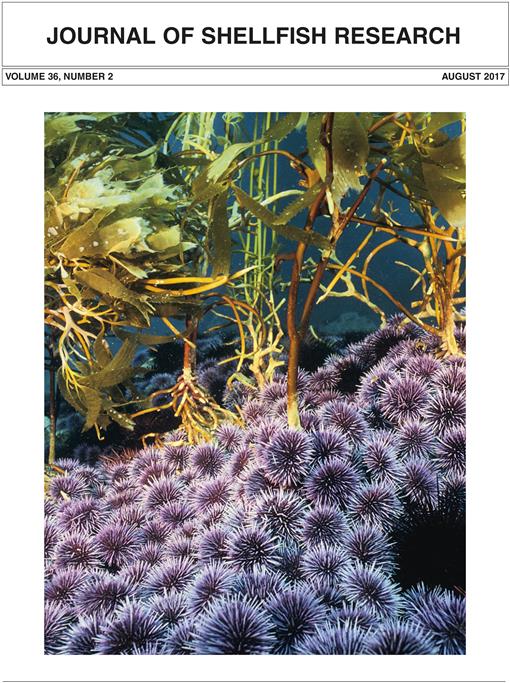Channeled whelks, Busycotypus canaliculatus, support commercial fisheries throughout their range along the US Atlantic seaboard. Given the modest amounts of published information available on channeled whelk, this study focuses on understanding the temporal and spatial variations in growth and reproductive biology in the Mid-Atlantic region. Channeled whelks were sampled from three inshore commercially harvested resource areas in the US Mid-Atlantic: Ocean City, MD (OC); Eastern Shore of Virginia (ES); and Virginia Beach, VA (VB). The largest whelk measured 230-mm shell length (SL) and was recorded from OC. Mean SL was largest in OC site (158.1 mm), followed by ES (137.6 mm) and then VB (132.4 mm). Both VB and ES populations showed a unimodal length-frequency distribution with the single peak at SL less than minimum landing size (MLS) for those regions, whereas OC population showed a bimodal (two peaks) distribution with the smaller peak at SL less than the MLS for that region and larger peak at SL greater than the MLS. Brody growth rate coefficient (k) was higher in males than females from all areas and highest for both sexes in VB (Male 0.245, Female 0.155), followed by ES (Male 0.220, Female 0.151) and then OC (Male 0.112, Female 0.100). The median size (SL) at 50% mature varied between resource area and sex. Males from ES and VB reached maturity at a smaller mean size (123 and 121 mm, respectively) than OC (134 mm). Females from VB reached maturity at a smaller size (148.9 mm) than ES (157.6 mm) and OC (158.6 mm). Recruitment to the fishery was estimated to occur at ∼6 y for VB and ∼7–8 y for ES and OC and was calculated from length at age estimates from von Bertalanffy growth model. Under current MLS for each area, whelk harvested from VB were recruited into the fishery at a much younger age compared with those from OC. The probability of females reaching MLS before sexual maturity in all three commercially targeted resource areas is quite low given current MLS.
How to translate text using browser tools
1 August 2017
Population and Reproductive Biology of the Channeled Whelk, Busycotypus canaliculatus, in the US Mid-Atlantic
Robert A. Fisher,
David B. Rudders
ACCESS THE FULL ARTICLE

Journal of Shellfish Research
Vol. 36 • No. 2
August 2017
Vol. 36 • No. 2
August 2017
age
Busycotypus canaliculatus
growth
maturity
Melongenidae
western Atlantic
whelk




